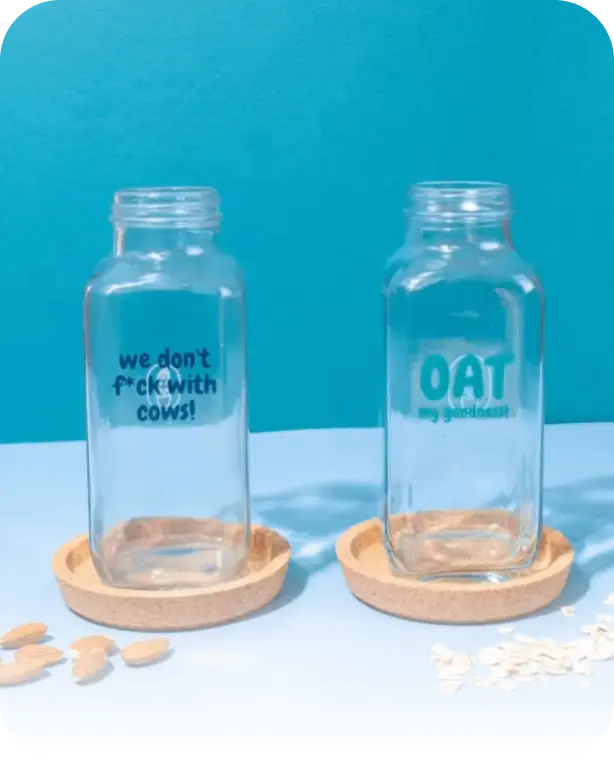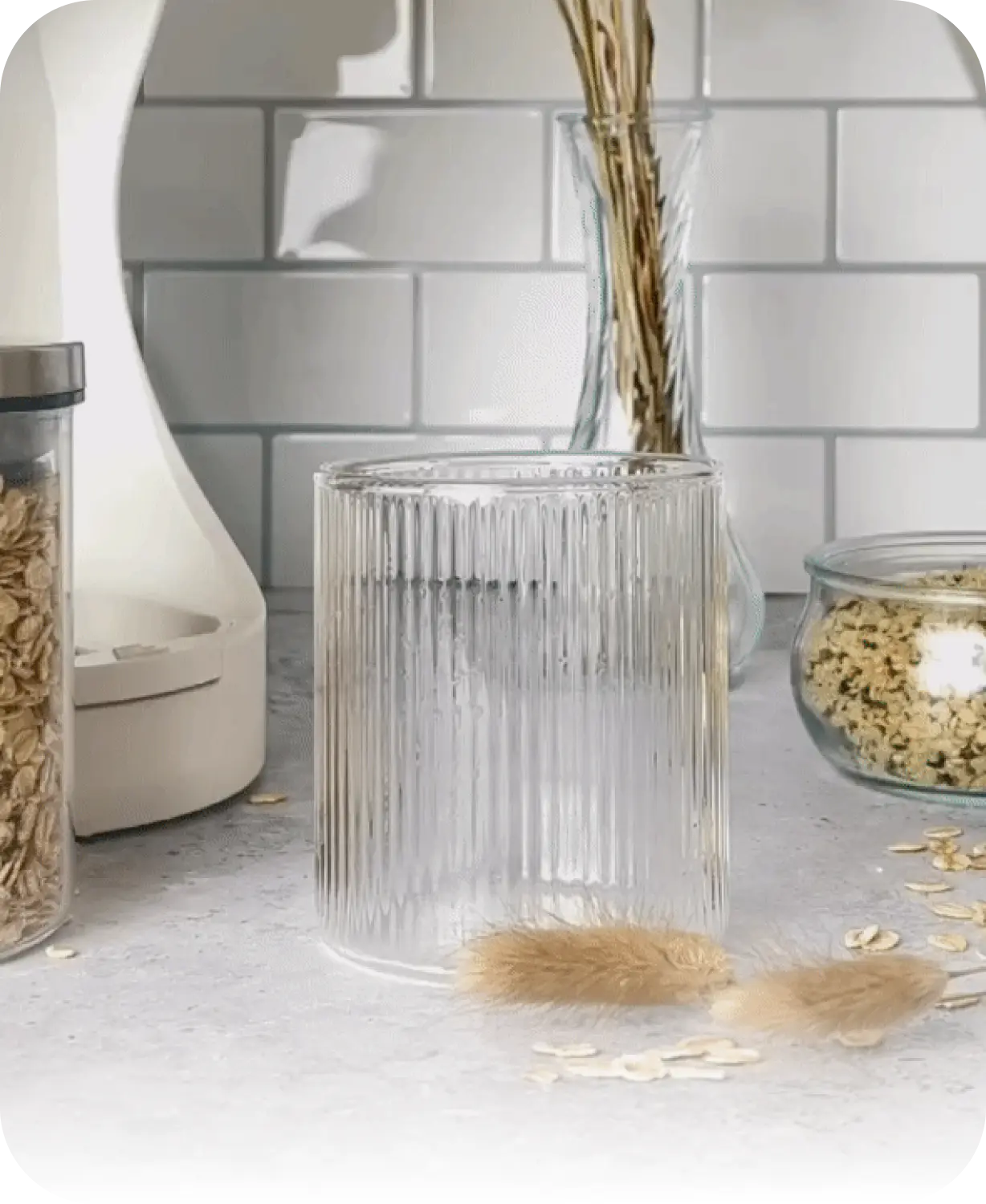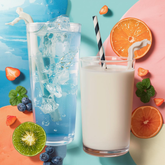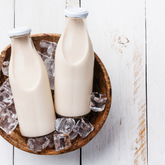As more people rethink what’s on their plate (and in their cup), plant-based milks are no longer niche, they’re a mainstream lever for cutting the environmental cost of our diets. Making fresh plant milk at home with a Milky Plant does more than taste great; it reduces greenhouse gas emissions, saves land and water, cuts packaging and food-waste impacts, and helps localize food systems. Below I lay out the data-backed case for why fresh, homemade plant milk matters and how Milky Plant fits into a more sustainable food future.
1) Big-picture climate and resource wins from plant milks
Multiple life-cycle studies show that, on average, plant-based milks have substantially lower environmental footprints than cow’s milk, especially for greenhouse gases, land use and (often) freshwater use. In short: one litre of cow’s milk typically causes several times the greenhouse-gas emissions of the most common plant milks, and requires far more land.
Put simply: swapping cow’s milk for plant alternatives, oat, soy, pea, almond, or rice, is one of the more effective single-food swaps people can make to reduce diet-related emissions. Recent overviews and life-cycle assessments continue to reach the same conclusion: dairy sits near the top for climate and land impacts, while many plant milks sit much lower.
2) Water and land: where the differences really show
Water and land are two of the scarcest resources in food production. Large comparative datasets show that dairy requires roughly an order of magnitude more land and many times more water per litre than most plant milks. For example, commonly cited comparisons find cow’s milk using hundreds of litres of water per litre produced, while soy and oat milks can require only dozens of litres. These resource savings scale quickly when adoption grows.
(Important nuance: some plant milks, almonds and rice, for instance, can be water-intensive in certain regions. Choosing ingredients sourced from less water-stressed regions or choosing oat/pea/soy reduces that concern. Recent analyses highlight pea and soy as especially low-impact plant proteins.
3) Reducing food waste and packaging footprints - the advantage of making it fresh
Food loss and waste is a major global problem: roughly one-third of food produced for human consumption is estimated to be lost or wasted annually, with large environmental and economic consequences. Making more food at home, and avoiding single-use packaging, helps reduce the downstream impacts tied to processing, transport and disposal.
Commercial plant milks typically come in aseptic cartons or plastic bottles; each carton requires production, transport and disposal energy. Homemade plant milk eliminates the need for some of that packaging and the extra transport steps. When households replace even a portion of store-bought plant milk with fresh, home-made batches, the avoided packaging and local production often yield a net environmental benefit, particularly if you store milk in reusable bottles and plan recipes to minimize spoilage. (Packaging-design research also shows smarter packaging and reduced materials can cut food loss and waste in supply chains.)
4) Nutrition & consumer considerations, fresh doesn’t mean “less nutritious”
Nutrition is a different but related topic. Many commercial plant milks are fortified to match calcium and vitamin D in cow’s milk; protein levels, however, vary widely across plant bases. Some legume-based milks (soy, and increasingly pea) come close to cow’s milk in protein content, while oat and almond milks are typically lower in protein. Consumers should check labels and pair plant milks with protein- and micronutrient–rich foods as needed. Fresh homemade milks let you control ingredient choices (e.g., using cashews or soy for higher natural protein, adding a fortification step if desired).
5) Localized production strengthens resilient food systems
A more distributed model of food production, where people can prepare simple staples at home with high-quality appliances, reduces supply-chain fragility. Localized, small-batch production cuts the kilometres food travels, reduces vulnerability to packaging/transport disruptions, supports ingredient diversity (you can use local oats, nuts, seeds), and keeps more food value in communities. Appliances like Milky Plant make it fast and easy to produce consistent, hot or cold plant milk at home, turning whole ingredients into a ready-to-use base for drinks, cooking and baking.
6) How Milky Plant helps, practical sustainability benefits
- Less packaging waste: Make several litres from bulk dry ingredients and store in reusable bottles rather than buying new cartons every week. That reduces single-use packaging and the embedded emissions of carton production and recycling.
- Ingredient flexibility for lower footprints: Choose oat, pea or soy to maximize low land/water footprints (or experiment with locally grown grains/seeds).
- Lower transport & supply-chain emissions: Home production avoids part of the industrial processing and long-distance logistics chain.
- Waste reduction via batch control: Make only what you need, or make concentrated batches (or milks for cooking) to reduce spoilage and leftover waste. This helps tackle household-level food waste, which is a major contributor to overall food-system emissions.
7) Practical tips for sustainable home plant-milk making
- Pick low-impact bases: oats, peas and soy are generally good choices if you’re prioritizing low emissions and water use.
- Buy dry in bulk: whole oats, nuts and seeds have lower packaging per kg than pre-made cartons. Store dry goods airtight.
- Use reusable bottles and label dates: this reduces packaging and helps avoid spoilage-related waste.
- Repurpose leftover pulp: use nut/seed pulp in baking, smoothies, crackers or compost - cutting waste and returning nutrients to soil. (Small extra effort, big sustainability payoff.)
- Try protein-forward recipes: if you want a milk with higher protein, use soy, pea protein, or blend cashew + soy. Check fortification options for calcium and vitamin D if it’s a dietary priority.
8) What the data tells us, and what still needs work
The evidence is clear: replacing dairy with plant-based milks lowers average greenhouse-gas emissions, land use, and (in many cases) water use per litre. But the exact footprint depends on ingredient choice, sourcing region, and packaging. Continued improvements in ingredient sourcing, packaging innovation, and dietary guidance will amplify the environmental wins. Major life-cycle overviews (including the global farming datasets consolidated by Poore & Nemecek) consistently show that moving away from high-impact animal products toward plant-based alternatives is one of the most effective diet-level strategies for reducing food-system emissions.
Fresh plant milk, made at home with Milky Plant, isn’t just a tasty cup; it’s a practical step toward a less wasteful, more resilient food system. By choosing low-impact ingredients, cutting packaging, and reducing household food waste, small everyday choices add up to meaningful environmental benefits. If you care about flavor, nutrition and the planet, fresh plant milk is a delicious win-win.















